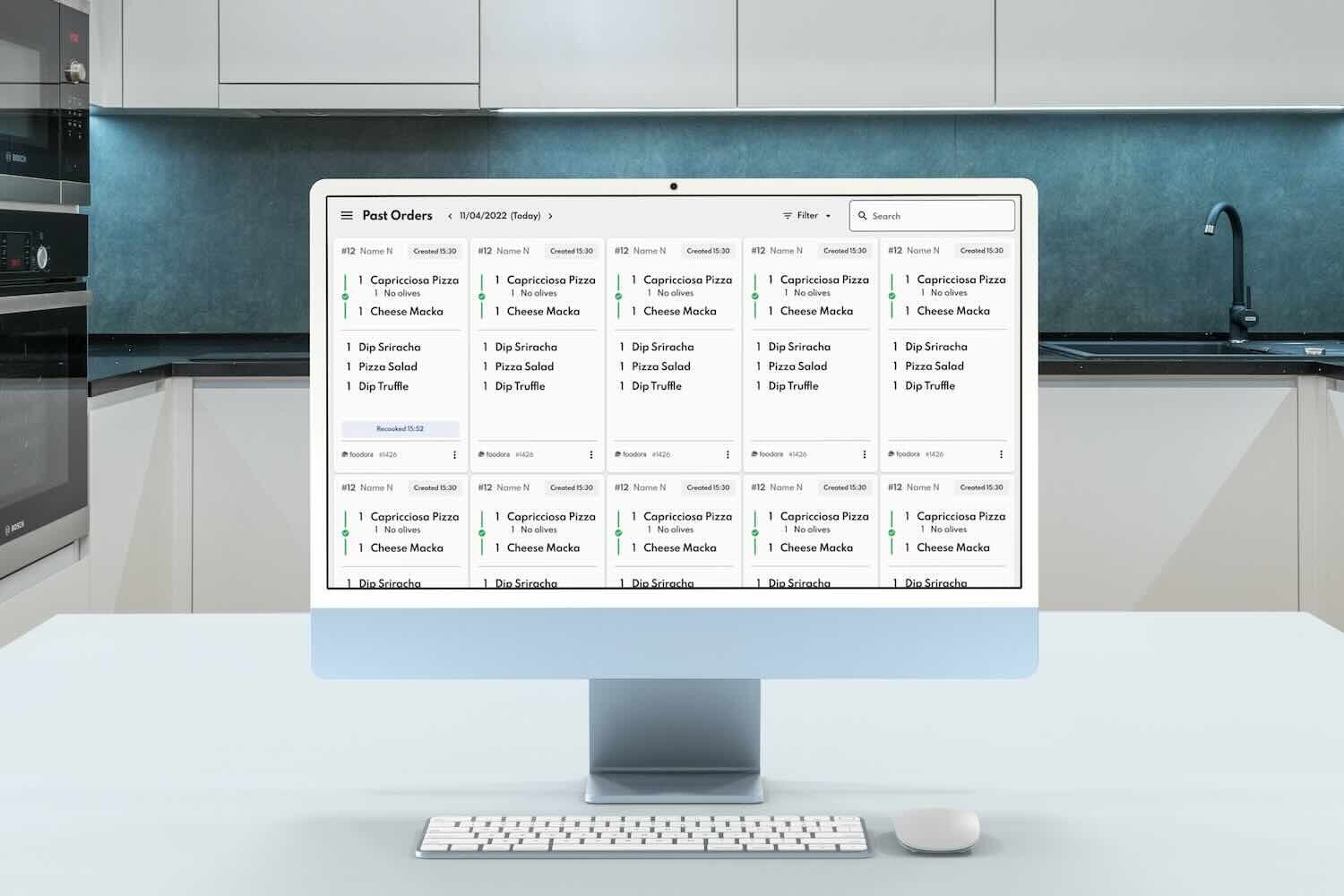Summary
I led the redesign and scaling of KitchenOS, the software and hardware platform powering Curb Food’s 18+ ghost kitchens. As Product Manager, I directed two teams with 12 FTEs across design, front-end, and back-end engineering.
By tackling usability issues, standardizing hardware setup, and streamlining workflows, we reduced kitchen service time by over 20%, cut hardware setup time by 80%, and prepared KitchenOS for future multi-market expansion.
The Challenge
Curb Food’s rapid expansion created operational bottlenecks in its 18 ghost kitchens. The KitchenOS platform, though functional, faced issues:
- Complex hardware setup slowed down new kitchen deployments.
- Inefficient software workflows created friction for kitchen staff, lengthening food preparation times.
- Scalability risks threatened future growth if processes were not standardized.
My Contribution
As Product Manager, I was responsible for leading two cross-functional teams and ensuring KitchenOS could scale:
- Team Leadership: Led 2 cross-functional teams of 12 people, including designers and engineers.
- Problem Discovery: Prioritized usability and operational challenges through direct user research and analytics.
- Solution Design: Defined and validated improvements to both software and hardware processes.
- Execution & Delivery: Coordinated design, development, and rollout of improvements to ensure impact at scale.
Used Methodologies & Strategies
To deliver scalable improvements, I combined user insights with data-driven prioritization:
- User-Centric Research: Interviews with kitchen staff to capture pain points and define usability goals.
- Analytics-Driven Decisions: Leveraged tools like Amplitude to measure usage patterns and pinpoint bottlenecks.
- Agile Product Management: Iterative design, testing, and delivery across two parallel teams.
- Cross-Team Collaboration: Fostered alignment between KitchenOS and Pickup Experience teams for end-to-end optimization.
- Standardization Frameworks: Created repeatable processes for hardware setup and kitchen onboarding.
Solution
We addressed the challenges with a two-track solution:
- Streamlined KitchenOS Software
- Simplified the user interface for greater clarity and speed.
- Fixed high-impact bugs that slowed food preparation.
- Standardized Hardware Setup
- Developed a scalable setup process for equipping new kitchens.
- Reduced manual complexity, ensuring consistency across deployments.

Results
The improvements delivered measurable operational gains:
- 20% faster service times per order, driven by simplified software and bug fixes.
- 80% reduction in hardware setup time per kitchen, enabling faster scaling into new markets.
- KitchenOS future-ready, standardized for expansion across multiple ghost kitchens.
Conclusion
This project demonstrated my ability to lead cross-functional product teams, integrate user research with analytics, and deliver scalable operational improvements. By redesigning KitchenOS and its deployment process, we positioned Curb Food to expand efficiently while ensuring staff could work faster and with less friction.
It highlights my strengths in user-centric design, data-driven decision making, and collaborative leadership — essential capabilities for product leaders building scalable systems.
